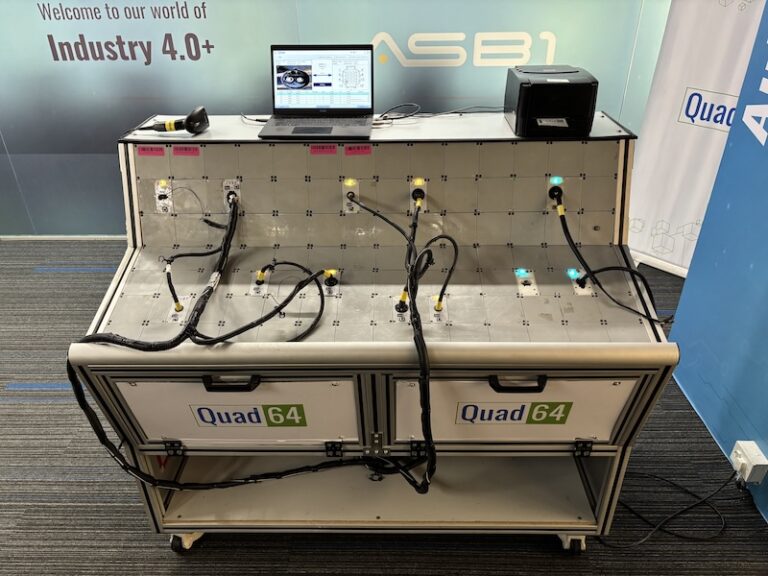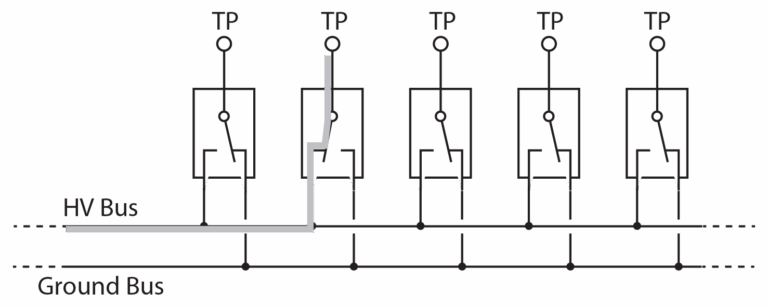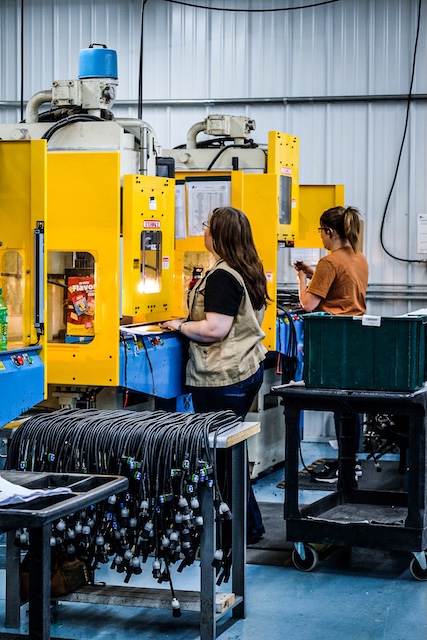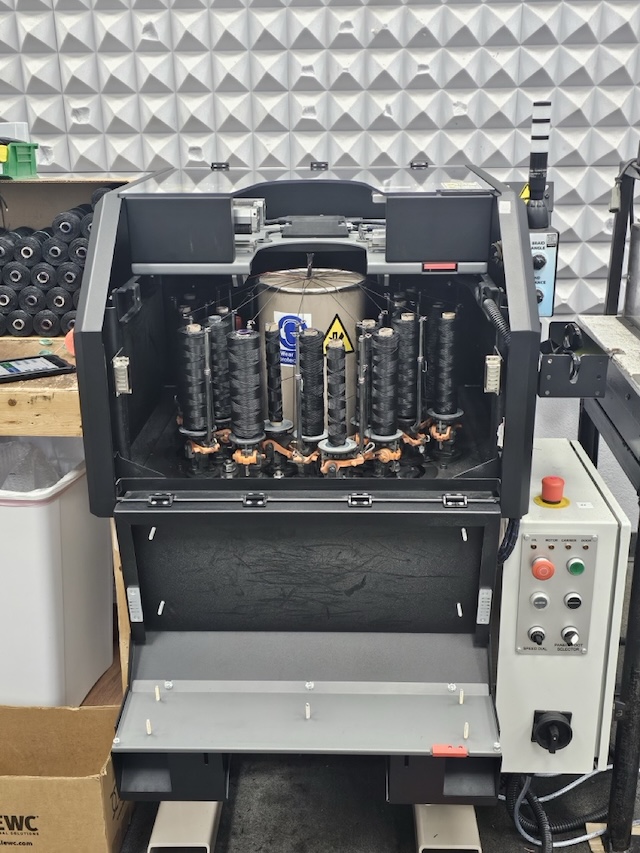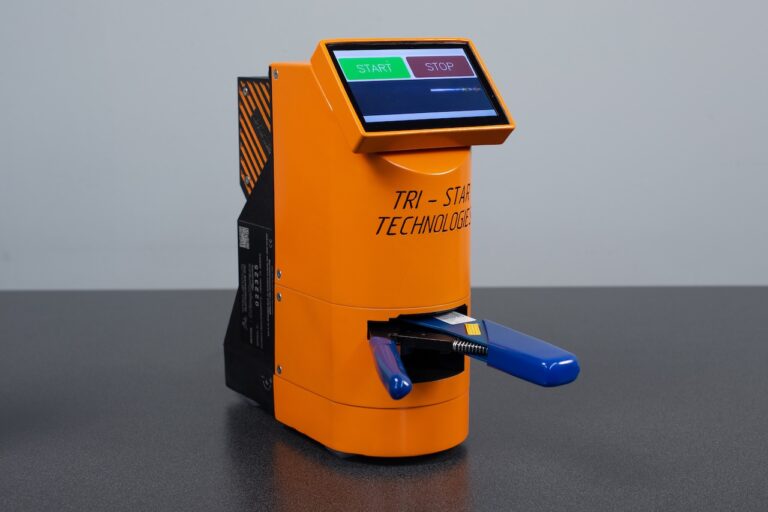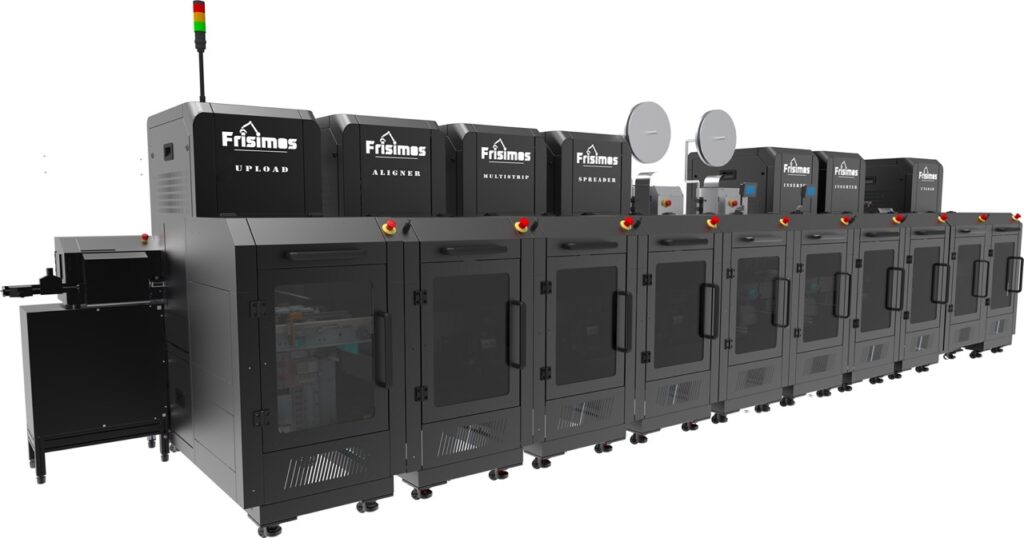By Joe Tito
Automation is a hot topic in the wire harness industry. Advances in optics and sensor technology are beginning to bring automation to the low-volume/high-mix realm. Scouring through the exhibitor list for the EWPT Expo, Frisimos jumped out as a new exhibitor in the automation realm. They have created a modular approach to a fully automated cable assembly line. To gain a better understanding of their product offering, WHN reached out to Tal Pechter, CEO and Nadav Ofir, Business Development at Frisimos.
Tal began by talking about the three main pillars that drive their approach to automation. “The first is the miniature robots that can recognize and manipulate a single wire out of a bouquet of wires. This is the most labor-intensive task, and sorting the wires and sending them to a known position is the first jump in automation. It’s the missing link, and we use AI algorithms to identify the wires and place them to the proper location (figure 1).” He stressed that the integration between the vision system and the mechanical system is key to automating multicore cable harness manufacturing.

The second pillar Tal mentioned in reaching their automation objectives is with their laser capabilities. “With multicore cables, you have wraps and foils, so the shape is not angular—it is undefined. With properly focused lasers, we cut the foil or remove the shield and we do this in two steps. First, we rotate a cascade of mirrors around the cable. This focuses the laser to make a partial cut. We are not cutting the full layer; we are just making a groove. And then using a mechanical force, we remove that layer.”
The final pillar, and the one Tal and his team see as pivotal to bringing automation to the low-volume/high-mix arena, is the company’s modular approach. “I mentioned miniature robots, and lasers, but there are many other systems involved in cable assembly. We have modules, and each module has some of the same attributes like an upper conveyor, lower conveyor, a positioner and other capabilities for safety, etc. So, we are building a complete system like a block of Legos.” Each of the blocks represents a separate step in the assembly process.


Beyond mechanical innovation, Frisimos has developed a suite of software tools that significantly reduce human intervention in the production process. Tal spoke about several key advantages:
• Full traceability of every cable, enabling detailed monitoring and success measurement of each assembly stage, alongside comprehensive testing of all products.
• ERP system integration, facilitating seamless connectivity and operational efficiency.
• Simplified operation and setup by a single user, allowing for easy transition between products and agile adaptation to varying production requirements.
• Enhanced data analytics, providing valuable statistics such as takt time and yield for each job undertaken by the line.
“This comprehensive approach not only caters to the high-mix environment but is also designed for high-volume production, ensuring that businesses can scale their operations effectively,” he stated.
From its inception, the company has been dedicated to navigating the complexities of automating in a high-mix production environment. “This has led us to consistently evaluate what prevalent third-party tools are available and how they can be seamlessly incorporated into our systems, especially for tasks such as crimping,” Tal mentioned. “The strategy involves leveraging widely-used, standard equipment within our modules, allowing us to directly integrate with the tools our customers already prefer and utilize extensively.” This approach offers the significant benefit of enabling customers to continue using their existing applicators, thereby preserving their substantial investment in both tools and process expertise without necessitating any change or replacement.
The company takes a similar approach on the molding module. “We’ve asked customers which type of injection machines they use. Of course, there are two brands that are very popular, and we know how to integrate those into our system.”
Tal also mentioned that another goal is for these lines to do 100% testing. “Traceability is the name of the game. The most important thing here is, you can print a QR code or put a specific number on each cable and you can associate it with a test of that individual cable.” As with many of the others, Frisimos integrates third party equipment into their test module.
Frisimos recognizes that the human eye and the human hands are very sophisticated tools, so they are bringing the same biomimicry to their modules. “We are doing the same process the hand does. We are not developing new types of connectors or new types of cables. Sometimes we divide the processes of assembly differently than a human would, but most of the time we are following the same steps.”
Tal explained that the current area of concentration at Frisimos is with multi-core cable assembly—specifically common communication cables using standard M8 and M12 connection technology along with Cat 5e to Cat 8 as well as USB Type-C and even cables containing optical fibers. “Those cables are very common in the communication industry, and we are also moving into optics with our next module.”
Via webcam, Tal and Nadav showed examples on their assembly floor of three modular lines that are currently being tested prior to shipment. One of the major advantages that Tal spoke about when describing this agile modular approach to manufacturing is the ability to tailor production to specific customer needs without building huge inventories. Their customers can pick and choose which processes they wish to automate and add modules where necessary. “You get a matrix of capabilities with this line, and that is something that has always held back automation for high-mix. You can adjust easily to customer needs and remove bottlenecks.”
Another advantage of their automation approach is that production lines can be placed closer to the customer. This addresses several logistical challenges, such as tariffs and transportation costs. Frisimos is convinced their solution is attractive for manufacturers looking to streamline their supply chain and enhance local market responsiveness.
Tal and Nadav then discussed the shift towards bringing production closer to home. They see it as not just a tactical move, but a response to the changing global landscape, emphasizing the need for the advanced manufacturing methods Frisimos is poised to provide. “I think the atmosphere in the world is changing and you cannot speak about cable assembly without speaking about the geopolitical situation. If you want to bring production closer to home, you can’t bring back traditional production. Our advanced manufacturing methods are well suited to this adjustment, and we can help local companies better sell to their market. This is the objective we are trying to achieve, and it’s not just an immediate task that we can perform, but our vision of where things are headed.”
You can learn more about Frisimos by going to frisimos.com. To watch a video of the system in action, click HERE. Stop by Booth 337 at the EWPT Expo to learn more.

























